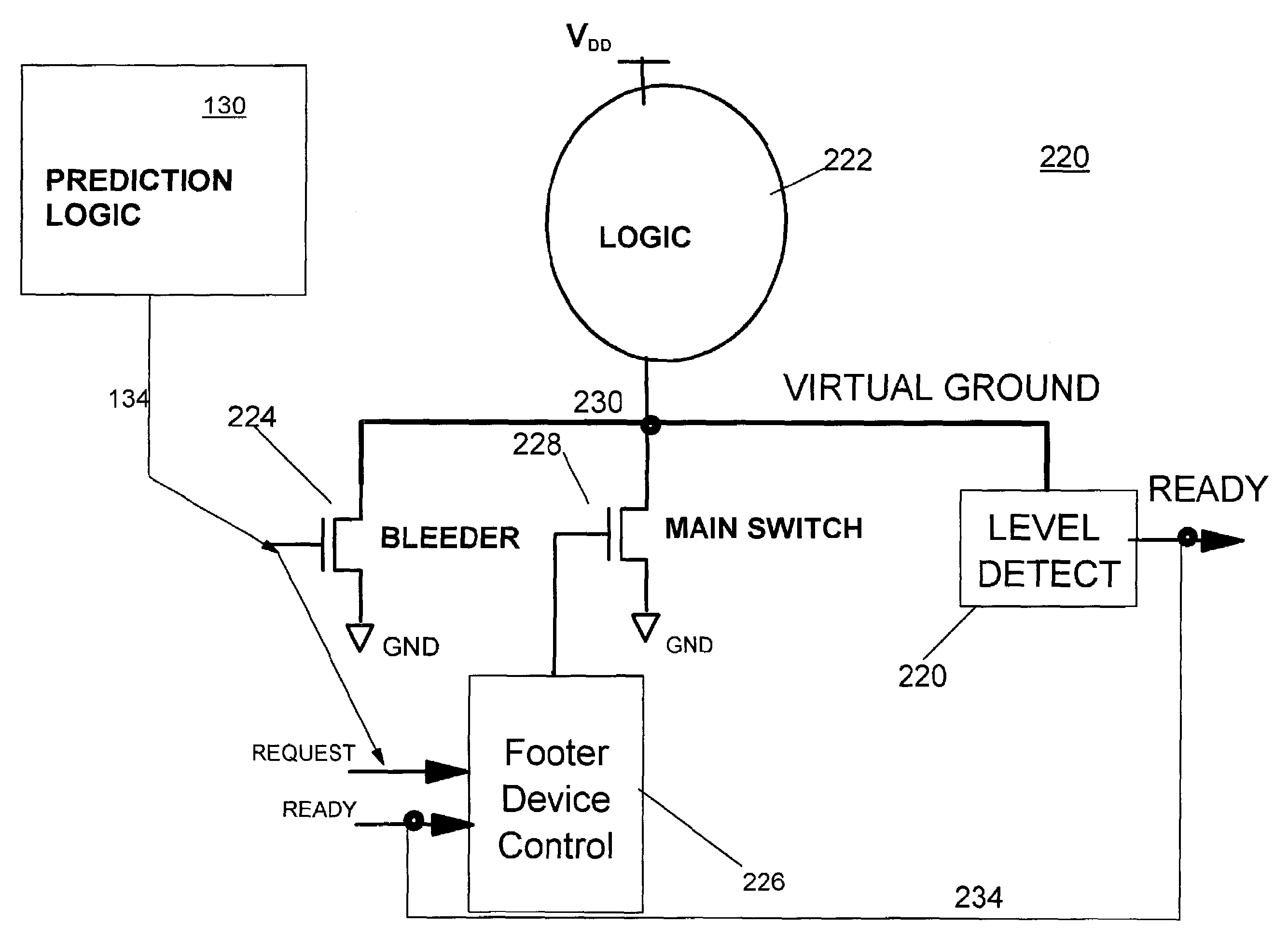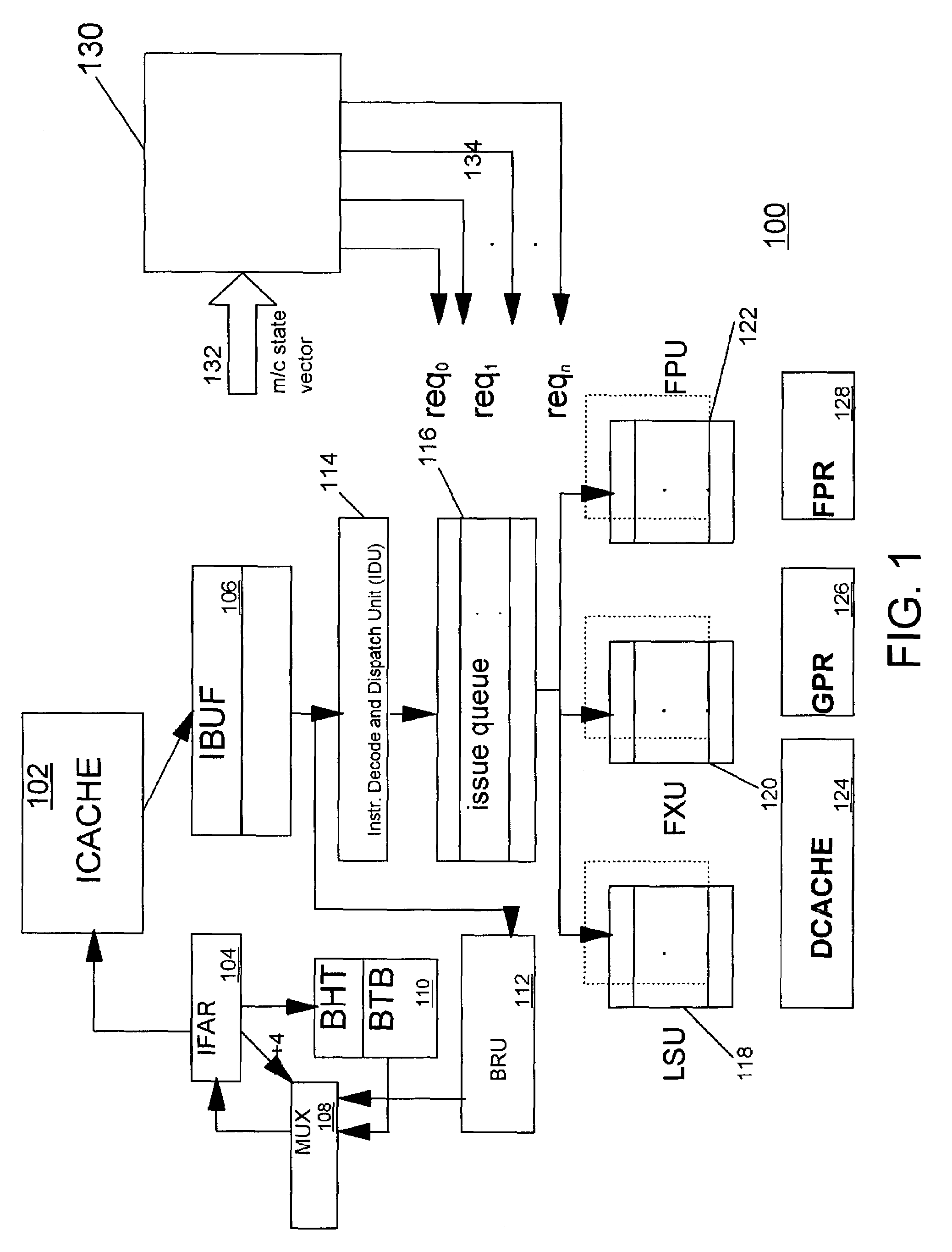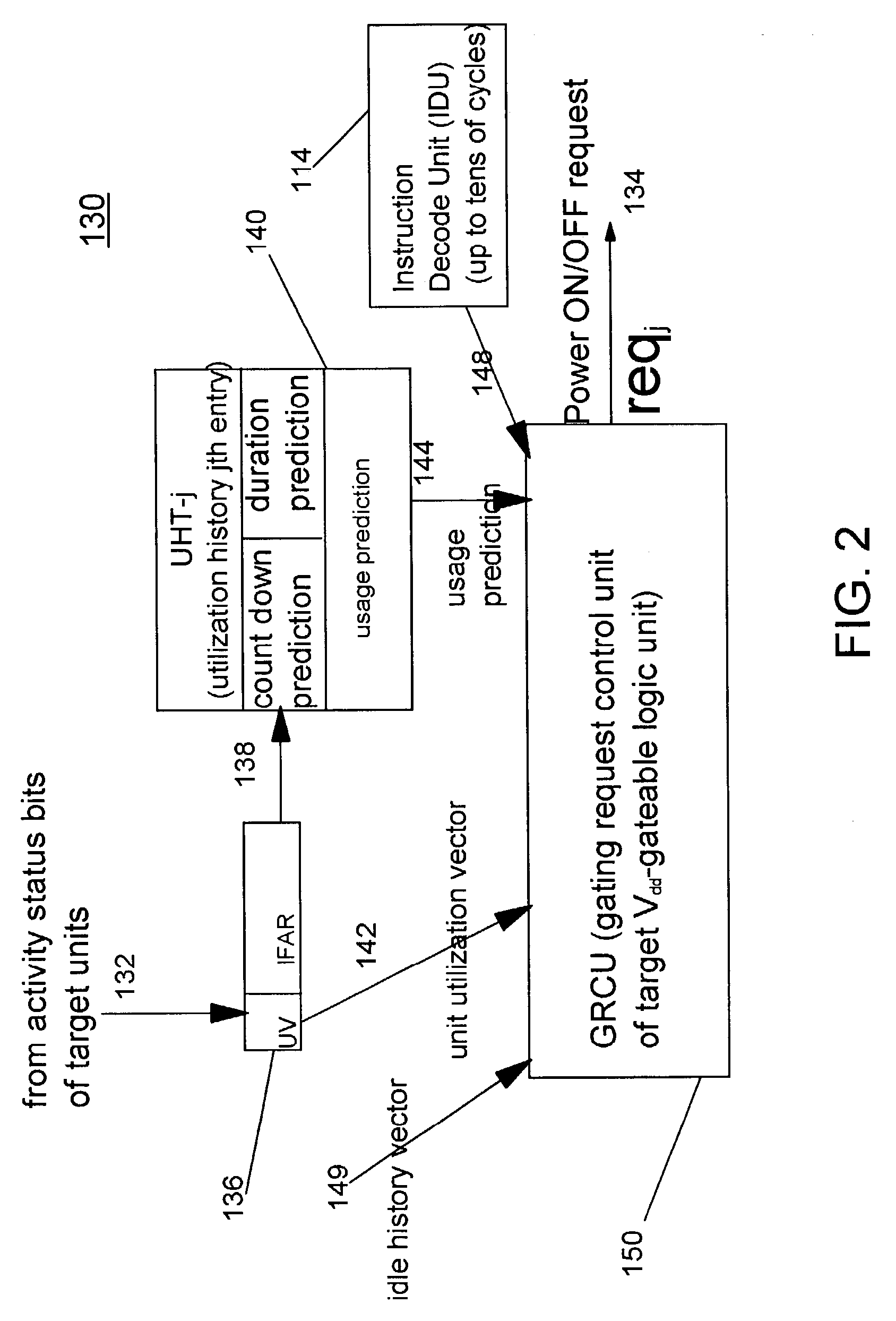Processor with low overhead predictive supply voltage gating for leakage power reduction
a technology of leakage power reduction and predictive supply voltage, which is applied in the direction of program control, liquid/fluent solid measurement, instruments, etc., can solve the problems of subthreshold leakage of substantial portion of chips, increased active chip power consumption, linear increase in chip leakage or standby power, etc., and achieves the effect of reducing processor power consumption and without appreciable performance loss
- Summary
- Abstract
- Description
- Claims
- Application Information
AI Technical Summary
Benefits of technology
Problems solved by technology
Method used
Image
Examples
Embodiment Construction
[0036]Turning now to the drawings and, more particularly, FIG. 1 shows a high level block diagram example of a preferred embodiment component (a processor 100 in this example) with subthreshold leakage power consumption reduction and control according to the present invention. In particular, component circuits or units share a common supply or multiple supply voltage (Vdd) sources. Average component leakage power is reduced without appreciable performance degradation, e.g., as measured using instructions per cycle (IPC) and without requiring significant additional hardware. Further, reliable component operation is maintained with a tight control on inductive noise (LdI / dt) effects. Where maximum power dissipation (and hence temperature) limits are rigidly constrained, power consumption is controlled with a minimal performance loss over a small, predetermined time window to maintain the component at or return the component to normal operating conditions.
[0037]The present invention ha...
PUM
 Login to View More
Login to View More Abstract
Description
Claims
Application Information
 Login to View More
Login to View More - R&D
- Intellectual Property
- Life Sciences
- Materials
- Tech Scout
- Unparalleled Data Quality
- Higher Quality Content
- 60% Fewer Hallucinations
Browse by: Latest US Patents, China's latest patents, Technical Efficacy Thesaurus, Application Domain, Technology Topic, Popular Technical Reports.
© 2025 PatSnap. All rights reserved.Legal|Privacy policy|Modern Slavery Act Transparency Statement|Sitemap|About US| Contact US: help@patsnap.com



